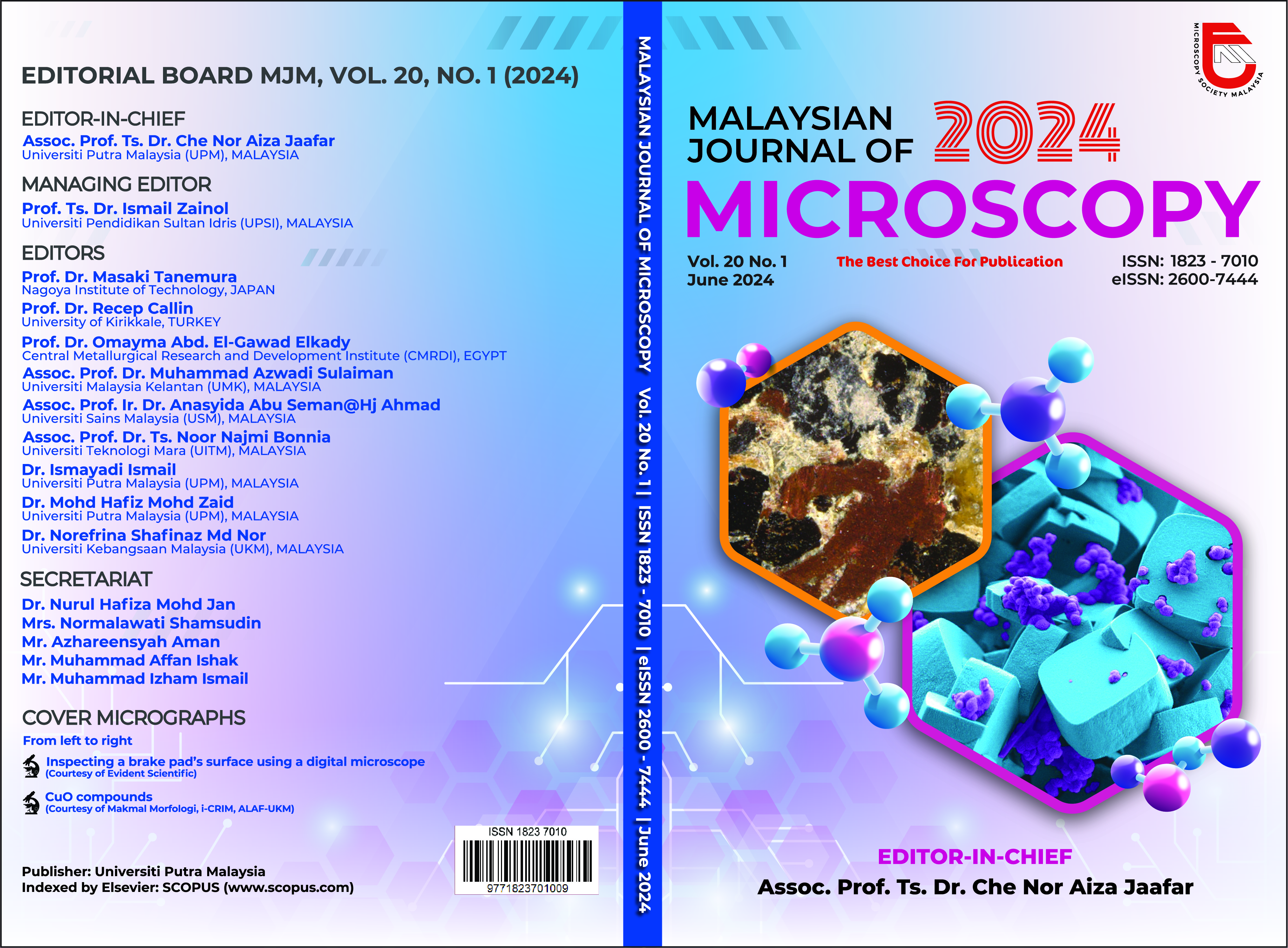THE EFFECT OF RICE HUSK ASH SILICA (RHASiO2) COMPOSITION TO THE PROPERTIES OF SAMARIUM-DOPED CERIA ELECTROLYTE
Abstract
Commercial inclusion of ceramic oxides such as copper oxide, lithium oxide, and iron oxide into ceria-based electrolytes has been utilized to improve ceria-based material performance by microstructure modification. The purpose of this research is to investigate the impact of rice husk ash silica (RHASiO2) composition on samarium-doped ceria electrolyte properties. This innovation, utilizing natural silica from rice husk ash, promotes eco-friendly technology development in engineering. RHASiO2 was calcined for 4 hours at 700 °C to produce high purity silica, which was then mixed with SDC powder using a dry ball milling process. SDC0, SDC0.25, SDC0.5, and SDC1.0 will include 0%, 0.25%, 0.5%, and 1.0% RHASiO2, respectively. To establish if RHASiO2 may act as an addition to the electrolyte, all samples will be sintered at 1200 °C for 60 minutes. TGA analysis was used to describe the composite powder on the basis of thermal characteristics, and Archimedes' principle will be employed to determine the porosity and density of the composite pellet. When compared to the pure SDC electrolyte, the density of the electrolyte with a greater weight % of RHASiO2 was higher. For SDC0.25, SDC0.5, and SDC1.0, the FTIR results clearly demonstrated RHASiO2 bonding at 1088, 1066, and 1067 cm-1, respectively, whereas 1104 cm-1 suggests an asymmetric stretching vibrations band. After the sintering process, the addition of silica will offer a new bonding element. EDX was used to identify the elements in the samples to establish the presence of SiO. Aside from that, SEM micrographs and Image J showed that the porosity percentage reduces when RHASiO2 composition increases. Overall, the results of all investigations suggest that adding RHASiO2 to SDC decreases its porosity while increasing the properties of the SDC-RHASiO2 electrolyte composite.


